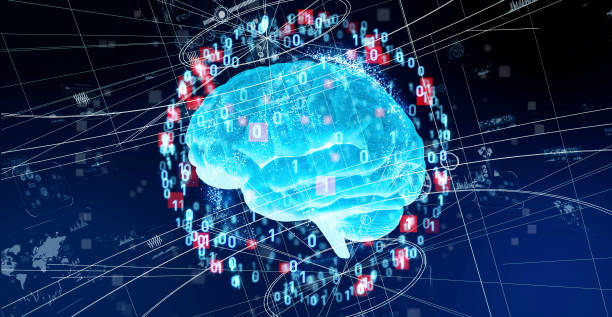Comprehensive Introduction to AI Robots
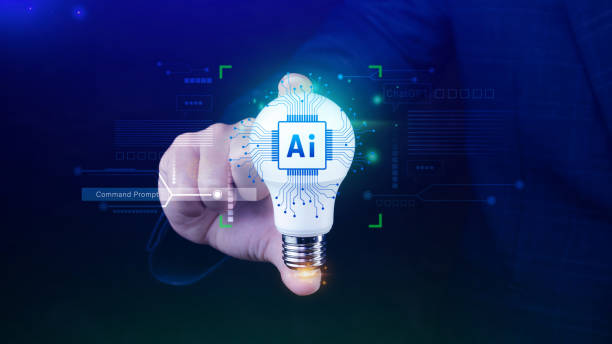
In the current era, #AI_Robots have transformed from a science fiction concept into a tangible reality.
These autonomous entities, powered by complex algorithms and vast amounts of data, are capable of performing various tasks that were previously only within human capability.
From industrial production lines to customer services and even precise medical surgeries, the presence of an Artificial Intelligence Robot has revolutionized the way we work and live.
The definition of this technology goes beyond a simple machine; an AI robot is a system that possesses the ability to understand its environment, reason, learn, and solve problems.
The history of this field traces back to early ideas in automation and then to significant advancements in modern artificial intelligence, which gained rapid momentum with the advent of neural networks and deep learning.
This explanatory and educational section aims to clarify the fundamental and basic concepts surrounding AI robots.
An artificial intelligence robot is not limited to its hardware; it is its intelligent software that gives it the ability to make decisions and learn.
These capabilities allow the robot to learn from its past experiences and improve its performance, which is the main distinguishing feature from traditional robots.
Recent advancements in cloud computing and parallel processing have also played a significant role in developing the capabilities of these robots, as they enable the processing of vast amounts of data in real-time.
Consequently, an AI robot is no longer a passive tool but an active and dynamic agent in its environment.
Are you worried about losing customers because you don’t have a professional e-commerce website?
With e-commerce website design by Rasav, forget these worries!
✅ Significant increase in sales and visitor-to-customer conversion rate
✅ Professional and user-friendly design that builds customer trust
⚡ Get a free consultation from Rasav
Underlying Technologies of Artificial Intelligence Robots
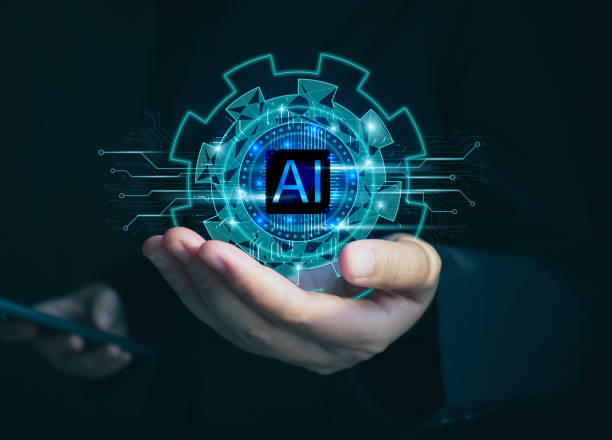
Behind every powerful #Smart_Robot lies a set of advanced #Underlying_Technologies.
These technologies enable AI robots to act intelligently and make decisions.
Machine learning, especially deep learning, forms the backbone of many modern AI robots.
These techniques allow the robot to identify patterns from data and make predictions, without being explicitly programmed.
For example, an AI robot can recognize objects by observing thousands of images or understand human language by listening to thousands of speech samples.
Natural Language Processing (NLP) is another vital component for conversational and interactive AI robots.
This technology enables the robot to understand, interpret, and respond to human language, which is essential for virtual assistants or customer service robots.
Machine vision also gives the AI robot the ability to see and interpret its surroundings, which is crucial for navigation, facial recognition, and quality inspection of products in various industries.
This specialized section explains in detail how these technologies work together to build an efficient AI robot.
The combination of these technologies creates a comprehensive system that is not only capable of understanding the environment but can also act independently and interact with it.
An advanced AI robot can use various sensors such as cameras, lidar, and radar to collect data and then, with the help of deep learning algorithms, model and understand its environment.
It is these technical complexities that have transformed AI robots into powerful tools for solving complex problems.
Amazing Applications of Artificial Intelligence Robots in Everyday Life
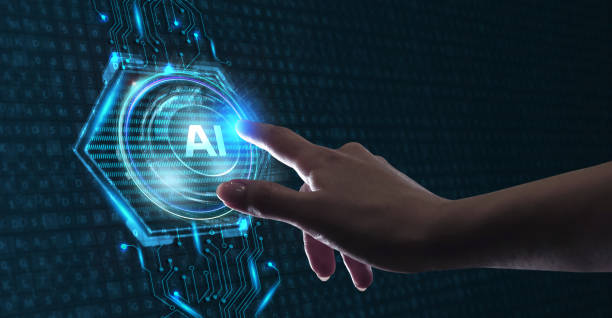
The applications of #Artificial_Intelligence_Robots are much wider today than you might imagine.
These technologies are no longer confined to laboratories and have actively penetrated various aspects of our lives.
From smart homes controlled by a central AI robot to hospitals where robots participate in complex surgeries and patient care, their presence is increasing.
In the industrial sector, AI robots have significantly increased productivity and accuracy on production lines, taking on repetitive and dangerous tasks and reducing human errors.
This entertaining yet analytical section examines real-world and news examples of the impact of these robots.
Logistic robots in warehouses, food delivery robots, and even cleaning robots in public places are just a few examples of the active presence of these technologies.
In agriculture, AI robots help farmers monitor and manage crops with greater precision, leading to increased yield and reduced resource consumption.
In education, AI robots can act as interactive teaching assistants and personalize the learning experience for students.
These diverse applications demonstrate the immense potential of an AI robot in transforming human life.
The table below highlights some of the most prominent applications of AI robots:
| Application Area | AI Robot Example | Benefits |
|---|---|---|
| Industry and Manufacturing | Collaborative Robots (Cobots), Assembly Robots | Increased accuracy and speed, reduced human hazards |
| Healthcare | Surgical Robots, Nurse Assistant Robots | High precision in surgery, assistance in patient care |
| Services and Home | Robotic Vacuum Cleaners, Delivery Robots | Convenience, automation of daily tasks |
| Agriculture | Planting and Harvesting Robots, Crop Monitoring Robots | Increased productivity, resource optimization |
These examples show only a fraction of the countless capabilities of an AI robot, and it is expected that more creative applications of this technology will be witnessed in the near future.
Challenges and Ethical Considerations in AI Robot Development
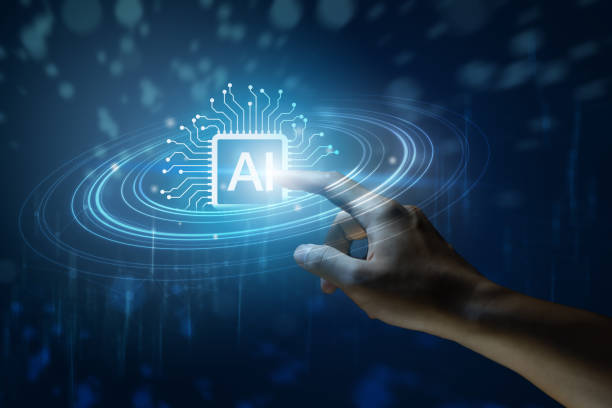
The development of #Smart_Robots, alongside numerous benefits, also comes with #Serious_Challenges and #Ethical_Considerations that require careful attention.
One of the biggest concerns is the impact of these robots on the job market and the potential replacement of human labor by machines.
This issue, especially in repetitive and physical jobs, raises important questions about the future of employment and the need for retraining the workforce.
Will an Artificial Intelligence Robot lead to widespread unemployment or create new job opportunities? This is a contentious issue that requires deep analysis.
Other ethical issues include the discussion of accountability in robot-induced accidents, data privacy, and potential biases in AI algorithms.
If an autonomous AI robot causes an accident, who will be responsible? Are the data collected by robots properly protected? Also, AI algorithms may inadvertently reproduce biases present in training data, leading to discrimination.
This analytical section delves into these challenges and discusses possible solutions for addressing them.
Developing comprehensive legal and ethical frameworks to govern the development and deployment of AI robots is of paramount importance to prevent potential misuse and ensure that this technology acts for the benefit of humanity.
Control and transparency in the decision-making of AI robots are also among the issues that need special attention to increase public trust in this technology.
Research shows that 80% of customers trust companies with a professional website more. Does your current website inspire this trust?
With Rasav’s corporate website design services, permanently solve the problem of lack of customer trust and weak online image!
✅ Create a professional image and increase customer trust
✅ Generate more sales leads and business growth
⚡ Get a free consultation
The Future of Artificial Intelligence Robots: Predictions and Emerging Trends
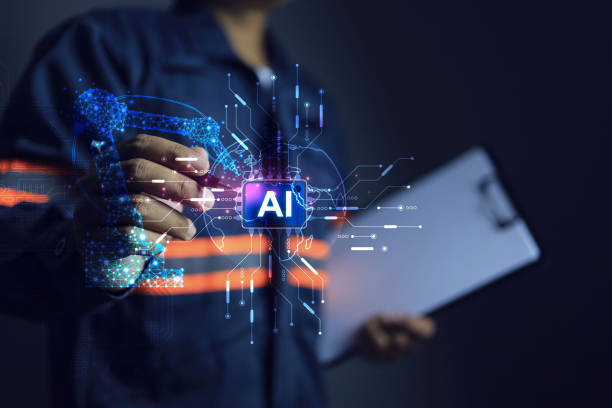
The future of #Artificial_Intelligence_Robots is filled with #Exciting_Predictions and #Emerging_Trends that could transform the shape of our societies.
One of the most important anticipated developments is the progress towards Artificial General Intelligence (AGI), where an AI robot can understand, learn, and apply human intelligence, beyond a specific task.
This analytical and news-driven concept brings unparalleled potentials for solving complex global issues, from climate change to treating diseases.
Self-improving robots, capable of optimizing their own software and hardware, are also another future trend.
Human-Robot Interaction (HRI) will reach unprecedented levels.
Robots will no longer be merely tools for performing tasks but will become human collaborators, companions, and even friends.
This includes the development of social robots, smarter home robots, and robots to assist the elderly.
Furthermore, it is expected that AI robots will play a more prominent role in inaccessible environments such as space, ocean depths, and disaster-stricken areas.
These robots can perform tasks that are dangerous or impossible for humans.
The convergence of robotics with other technologies such as the Internet of Things (IoT), blockchain, and quantum computing can also lead to more advanced and secure capabilities for AI robots.
This future outlook indicates that an AI robot is not just a gadget, but a fundamental element in the future human civilization that extends our capabilities to new frontiers.
Education and Skill Development for Working with Artificial Intelligence Robots

Given the rapid advancement of #Robotics_Technology and artificial intelligence, #Education and #Skill_Development for working with #Smart_Robots has become vital.
For individuals looking to enter this field or wishing to succeed in their careers, acquiring new knowledge and skills in this area is a necessity.
This educational and guidance section outlines paths for enthusiasts.
Learning programming languages such as Python, which is the backbone of many AI projects, is considered the first step.
Understanding the concepts of machine learning, deep learning, and neural networks is also of great importance.
Online courses, universities, and boot camps provide countless opportunities to acquire these skills.
In addition to technical knowledge, soft skills such as problem-solving, critical thinking, creativity, and the ability to collaborate with interdisciplinary teams are also highly valuable in this field.
An AI robot specialist must be able to not only write code but also understand complex challenges and provide innovative solutions.
Engaging in practical and open-source projects also significantly helps in strengthening skills and building a powerful portfolio.
Given that Artificial Intelligence Robot is becoming an integral part of every industry, investing in education and personal development in this area ensures a secure career future.
These guidelines help individuals prepare for future jobs where an AI robot plays a key role.
Comparing Artificial Intelligence Robots and Artificial Intelligence Software
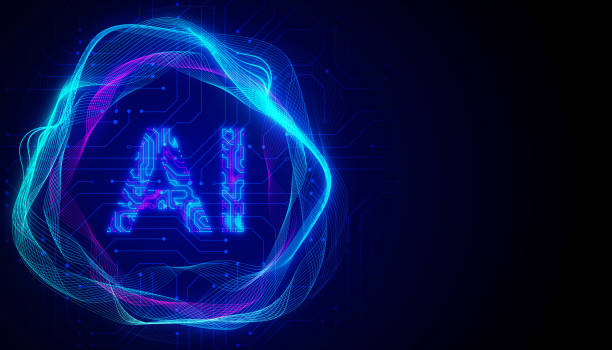
One of the common questions in the field of artificial intelligence is the difference between #Smart_Robot and #Artificial_Intelligence_Software.
At first glance, these two concepts might seem similar, but there are key differences between them that are essential for anyone interested in this field to understand.
This specialized and explanatory section analyzes these distinctions.
The main difference lies in the presence of a physical body.
An artificial intelligence robot, as its name suggests, has a physical or mechanical component that allows it to move in the real world, interact with objects, and perform physical tasks.
This physical component includes sensors (for understanding the environment) and actuators (for performing movement).
In contrast, artificial intelligence software exists only as code and algorithms and has no independent physical body.
They run on existing hardware such as computers, servers, or smartphones.
Examples of AI software include voice assistants like Siri and Alexa, facial recognition systems in mobile applications, or content recommendation algorithms on video streaming platforms.
An AI robot can leverage AI software, meaning the intelligence within the robot is provided through these software programs.
In other words, AI software is the “brain,” and the robot is its “body.”
While AI software focuses on data processing and logical decision-making, AI robots are also directly involved with the physical environment.
This is an important distinction that also differentiates the applications and challenges of each.
The table below summarizes these differences:
| Feature | AI Robot | AI Software |
|---|---|---|
| Physical Body Presence | Yes (sensors, actuators) | No (code only) |
| Interaction with Physical Environment | Direct and Active | Indirect (via inputs) |
| Examples | Industrial robots, autonomous vehicles | Voice assistants, recommender systems |
| Main Tasks | Physical operations, navigation | Information processing, logical decision-making |
Therefore, although both utilize AI principles, they have different applications and limitations.
Cybersecurity and Artificial Intelligence Robots: Importance and Challenges
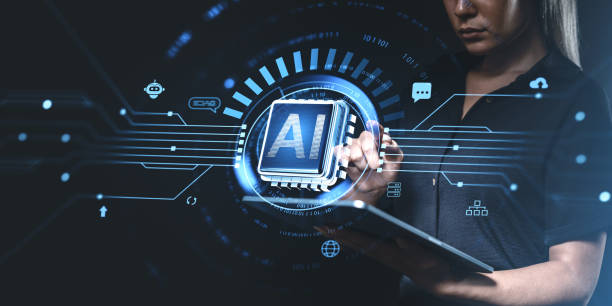
With the increasing complexity and autonomy of #Artificial_Intelligence_Robots, the issue of their #Cybersecurity has become a critical concern.
Just like any network-connected system, an AI robot is also vulnerable to #Cyber_Attacks that can lead to catastrophic consequences, especially if the robot is operating in sensitive or critical environments such as hospitals or factories.
This specialized and explanatory section examines the importance of protecting these systems and the existing challenges.
Vulnerabilities can arise from software flaws, weaknesses in communication protocols, or even physical manipulation.
Imagine a surgical robot going out of control due to a cyberattack, or an autonomous car being targeted.
Such scenarios highlight the importance of strengthening security measures in the design and implementation of AI robots.
Challenges include ensuring data integrity, strong authentication, and system recovery capabilities after an attack.
Since an AI robot often deals with large volumes of data, protecting the privacy of this data is also of particular importance.
Developing strong security frameworks, advanced encryption, and continuous monitoring of robot activities are essential.
Furthermore, there is a need for international cooperation to establish global security standards for robotics and artificial intelligence to prevent common vulnerabilities.
An AI robot must not only be intelligent and efficient but also resilient against cyber threats to maintain public trust in this technology and prevent potential misuse.
Research shows that 80% of customers trust companies with a professional website more. Does your current website inspire this trust?
With Rasav’s corporate website design services, permanently solve the problem of lack of customer trust and weak online image!
✅ Create a professional image and increase customer trust
✅ Generate more sales leads and business growth
⚡ Get a free consultation
Artificial Intelligence Robots and Job Transformation

The discussion about the #Impact_of_Smart_Robots on the #Job_Market and #Job_Transformation is one of the hottest topics currently.
This is a thought-provoking and analytical content that examines the future of various professions in light of advancements in robotics and artificial intelligence.
Will an AI robot lead to widespread job displacement or create new job opportunities? The answer to this question is complex and depends on multiple factors.
Some jobs involving repetitive and predictable tasks are at the highest risk of automation.
For example, on production lines, robots have been replacing human labor for years.
But at the same time, the emergence of AI robots has created a demand for new jobs.
Robotics engineers, data scientists, Human-Robot Interaction (HRI) designers, and AI ethicists are just a few examples of professions for which demand is increasing.
Jobs requiring creativity, critical thinking, complex problem-solving, and high emotional intelligence are less at risk of automation.
In fact, many experts believe that AI robots will act as tools to augment human capabilities and improve productivity, rather than completely replacing humans.
This means a transformation in the nature of jobs and the need for reskilling and upskilling the workforce.
Societies must prepare for these changes and develop necessary training and support programs to help individuals adapt to a future where an AI robot is an inseparable part.
Guidance for Getting Started with Artificial Intelligence Robots and Learning Resources

To #Get_Started with #Smart_Robots and #Artificial_Intelligence, abundant learning resources are available to help enthusiasts take their first steps firmly.
This guidance and educational section provides a practical path for entering this exciting field.
The first step is to acquire #Basic_Knowledge in AI and robotics concepts.
Websites, books, and free and paid online courses can be a good starting point.
Platforms like Coursera, edX, Udacity, and even YouTube offer diverse courses in this area.
Learning programming languages such as Python, C++, and ROS (Robot Operating System) is essential for anyone looking to develop an Artificial Intelligence Robot.
Python is an excellent choice due to its rich libraries in machine learning and deep learning.
For hands-on experience, you can use educational robotics kits like Arduino or Raspberry Pi and implement simple projects.
Participating in online AI and robotics communities (such as Stack Overflow forums, GitHub) allows you to exchange ideas with others, learn from their experiences, and ask your questions.
Open-Source projects also provide unparalleled opportunities for learning and participation.
Building a simple robot or developing a machine learning algorithm from scratch can significantly enhance your learning experience.
Remember that success in this field requires continuous learning and updating your knowledge with the latest advancements.
An AI robot is always evolving, so you must also evolve with it.
Frequently Asked Questions
| Question | Answer |
|---|---|
| What is an AI robot? | An Artificial Intelligence Robot is a machine capable of perceiving its environment, reasoning, learning, and making decisions to perform tasks autonomously. |
| What is the difference between conventional robots and AI robots? | Conventional robots perform repetitive tasks based on pre-programming, while AI robots can learn from experience, interact dynamically with their environment, and even behave in ways that resemble human intelligence. |
| What are the main applications of AI robots? | They are used in industries (manufacturing, assembly), medicine (surgery, diagnosis), services (customer support, domestic), exploration (space, underwater), and many other fields. |
| What technologies are used in building AI robots? | Machine Learning, Computer Vision, Natural Language Processing, Deep Learning, and Robotics are among the key technologies. |
| Can AI robots have emotions? | Currently, robots do not have emotions in the human sense. They can identify and react to emotions, but they do not experience emotions themselves. |
| What are the main challenges in developing AI robots? | Safety, reliability, ethics, autonomy, adaptability to complex environments, and natural human interaction are significant challenges. |
| How are AI robots trained? | They are typically trained using large volumes of data, machine learning algorithms, and deep learning to identify patterns and make decisions. |
| Examples of AI robots in everyday life? | Smart robotic vacuum cleaners, customer support chatbots, autonomous vehicles, and surgical robots in hospitals. |
| Are AI robots a threat to human jobs? | Some repetitive jobs may be automated, but at the same time, robots can increase productivity and create new jobs in the development, maintenance, and oversight of these systems. |
| How is the future of AI robots predicted? | They are expected to become smarter, more autonomous, and capable of performing more complex tasks, engaging in closer interaction with humans in various environments. |
And other services from Rasav Advertising Agency in the field of advertising
Smart Data Analysis: A new service for increasing SEO ranking improvement through attractive UI design.
Smart Digital Branding: Designed for businesses seeking to increase click-through rates through marketing automation.
Smart Link Building: A new service for enhancing campaign management through marketing automation.
Smart Conversion Rate Optimization: A dedicated service for growing user engagement based on Google Ads management.
Smart Marketing Automation: A new service for increasing SEO ranking improvement through key page optimization.
And over a hundred other services in the field of internet advertising, advertising consultation, and organizational solutions
Internet Advertising | Advertising Strategy | Advertorial
Resources
Smart Robot and Future ChallengesThe Impact of AI Robot Development on the EconomyArtificial Intelligence and Future Transformations in IranChallenges of Artificial Intelligence in Iran
?At Rasav Afarin Digital Marketing Agency, we help your business shine brightly in the online world. From secure and professional website design to comprehensive SEO strategies and targeted content creation, we are your reliable partner on the path to digital growth.
📍 Tehran, Mirdamad Street, next to Central Bank, Southern Kazeroun Alley, Ramin Alley, No. 6

